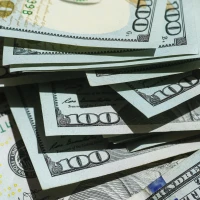Imagine a place where joy is manufactured, where smiles stretch across faces of all ages, and where fantasy becomes a tangible experience. This magical place is Disneyland, an emblem of amusement park success, a cultural staple, and a financial powerhouse. But behind the laughter and the nostalgic characters lies a thriving business model that generates an awe-inspiring daily revenue. In this deep dive, we will peel back the curtain to reveal the financial enchantment of Disneyland, exploring how much money this happiest place on Earth makes each day and the strategies that drive its profitability.
The Financial Magic of Disneyland
Disneyland is not just a theme park; it’s a phenomenon that has mastered the art of profit-making. Every aspect of the park is strategically designed to optimize guest experience and maximize spending, turning entertainment into a gold mine. But how much revenue does this destination of dreams generate daily?
Estimating the Daily Revenue
To understand Disneyland’s daily fortune, one must consider various revenue streams: admission tickets, merchandise sales, food and beverage sales, and other operational income such as hotel stays and special events. Calculating this figure involves analyzing public financial data, park attendance statistics, and pricing strategies.
Disneyland Park Admission
Admission prices to Disneyland have been strategically structured, with tiered pricing and annual passes to accommodate a broad range of visitors. Single-day passes can vary significantly, while annual passes cater to the most devoted fans willing to invest in a year-long Disney experience.
Merchandise and Product Sales
Stores filled with Disney-branded merchandise transform into veritable treasure troves, inducing visitors to bring a piece of magic home. From plush toys of beloved characters to exclusive collectibles, merchandise remains a vibrant revenue source for Disneyland.
Food and Beverage Services
The lure of themed dining experiences is irresistible in Disneyland, with options ranging from quick-service carts to sit-down restaurants. These establishments serve as another crucial income channel, with food and beverage choices that often carry the allure of rarity and a taste of the extraordinary.
Hotel and Travel Accommodations
Many visitors extend their Disneyland adventure beyond the park gates by staying at Disney-owned hotels. This aspect of the business capitalizes on the immersive Disney experience, often enticing guests to indulge in longer stays and premium amenities.
Analyzing Visitor Spending Patterns
Understanding how much each visitor might spend during their Disneyland trip is paramount in calculating the park’s daily earnings. On average, each guest may shell out funds across multiple categories including:
- Admission tickets
- Dining and snacks
- Souvenirs and merchandise
- Photopass services
- Special experiences
Collecting data on these spending habits gives us insight into the average per capita spending, a critical number in estimating daily revenue.
Operational Costs and Net Revenue
While revenue figures are impressive, operational costs also play a significant role in determining Disneyland’s financial health. Staff salaries, maintenance and renovations, marketing, and utility costs are all part of the equation. However, Disneyland’s net revenue—the profit remaining after all expenses—shines as a testament to its well-oiled engine of income generation.
Disney’s Revenue Models Unveiled
Peering further into Disney’s financial wand-work, several revenue models are at play that guarantee the turnstiles never cease spinning and the cash registers continue ringing.
Tiered Ticketing and Dynamic Pricing
Disneyland’s ticketing system employs dynamic pricing, fluctuating based on demand, season, and special events, thus ensuring crowd control and revenue maximization. This model appeals to a wide audience, with value days for budget visitors and premium packages for those who seek luxury.
Upselling with Magic and Nostalgia
Upselling is a subtle art at Disneyland, with special experiences and limited-time offers encouraging guests to spend more. Examples of upselling tactics include:
- VIP tours
- Character dining experiences
- Bibbidi Bobbidi Boutique makeovers
These additions are not just services, but carefully crafted emotional experiences that guests are willing to pay a premium for.
The Membership and Loyalty Advantage
The Disneyland Annual Passholder program fosters a community of loyal visitors, offering perks such as discounts and exclusive access to events. Loyalty programs like these ensure a steady flow of repeat visitors, providing a constant revenue stream and promoting brand loyalty.
Merchandising Strategies
Disneyland’s retail offerings expertly blend exclusivity with a sense of urgency. Limited-edition products and park-exclusive merchandise compel guests to purchase immediately, leveraging the fear of missing out.
Culinary Commerce
The park’s culinary options evolve with trends, offering Instagram-worthy eats and seasonal specialties that further boost spending. From Mickey-shaped treats to gourmet meals, food and beverage sales comprise a considerable slice of the revenue pie.
The Impact of Seasonality and Special Events
Variations in park attendance influence Disneyland’s daily income, with certain times of the year surging in profitability. Seasonal events such as Halloween and Christmas festivities draw in crowds, while special events like the anniversary celebrations create spikes in visitor numbers and sales. These seasonal and event-driven strategies keep the Disney magic fresh, encouraging repeat visitation.
Understanding Peak Seasons
During peak seasons, Disneyland operates at maximum capacity, with ticket prices and average guest spending reaching their zenith. The influx of visitors during times like summer vacations, and winter holidays, significantly bolster daily earnings.
The Role of Special Events
Special events are masterclasses in marketing, providing exclusive experiences like after-hours park access or themed seasonal parties. Ticketed events such as Disney’s Halloween Party or the Christmas-themed “Mickey’s Very Merry Christmas Party” are high-value additions to the park’s calendar, generating additional revenue and enhancing the overall Disney experience.
Conclusion: The Perpetual Prosperity of Disneyland
Disneyland’s daily fortune is not simply an outcome of chance; it is the result of meticulous planning, strategic financial models, and the enduring appeal of the Disney brand. The park’s ability to enchant millions while simultaneously driving impactful revenue is a testament to its unique position in the entertainment industry. Through analysis of their revenue streams, pricing strategies, and seasonal strategies, we can appreciate how Disneyland transforms joy into financial success each day, ensuring that this renowned theme park continues to be synonymous with wonder, happiness, and a thriving business model for years to come.
Delving into Disneyland’s daily earnings has offered us not only a glimpse into a financial marvel but also an appreciation of the delicate balance between creating an enchanting visitor experience and executing a successful business strategy. As visitors from around the globe flock to this magical realm, one thing is certain—Disneyland’s magic touches hearts and wallets alike, proving that fairy tales and fiscal triumphs can indeed coexist in pure harmony.










